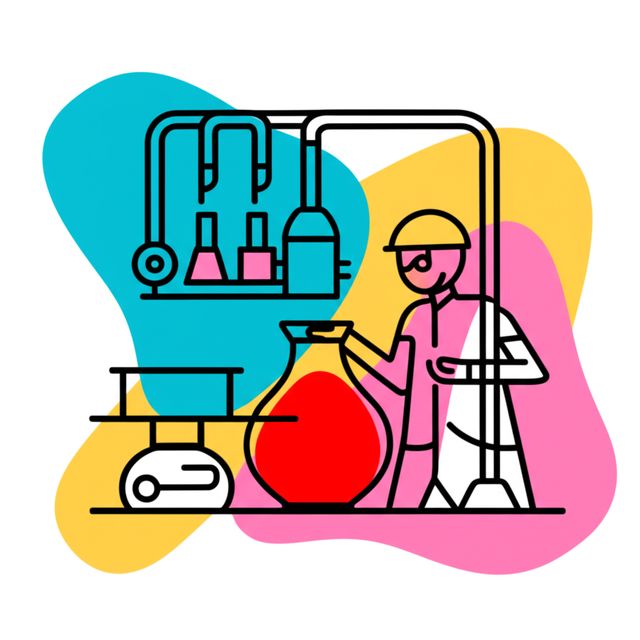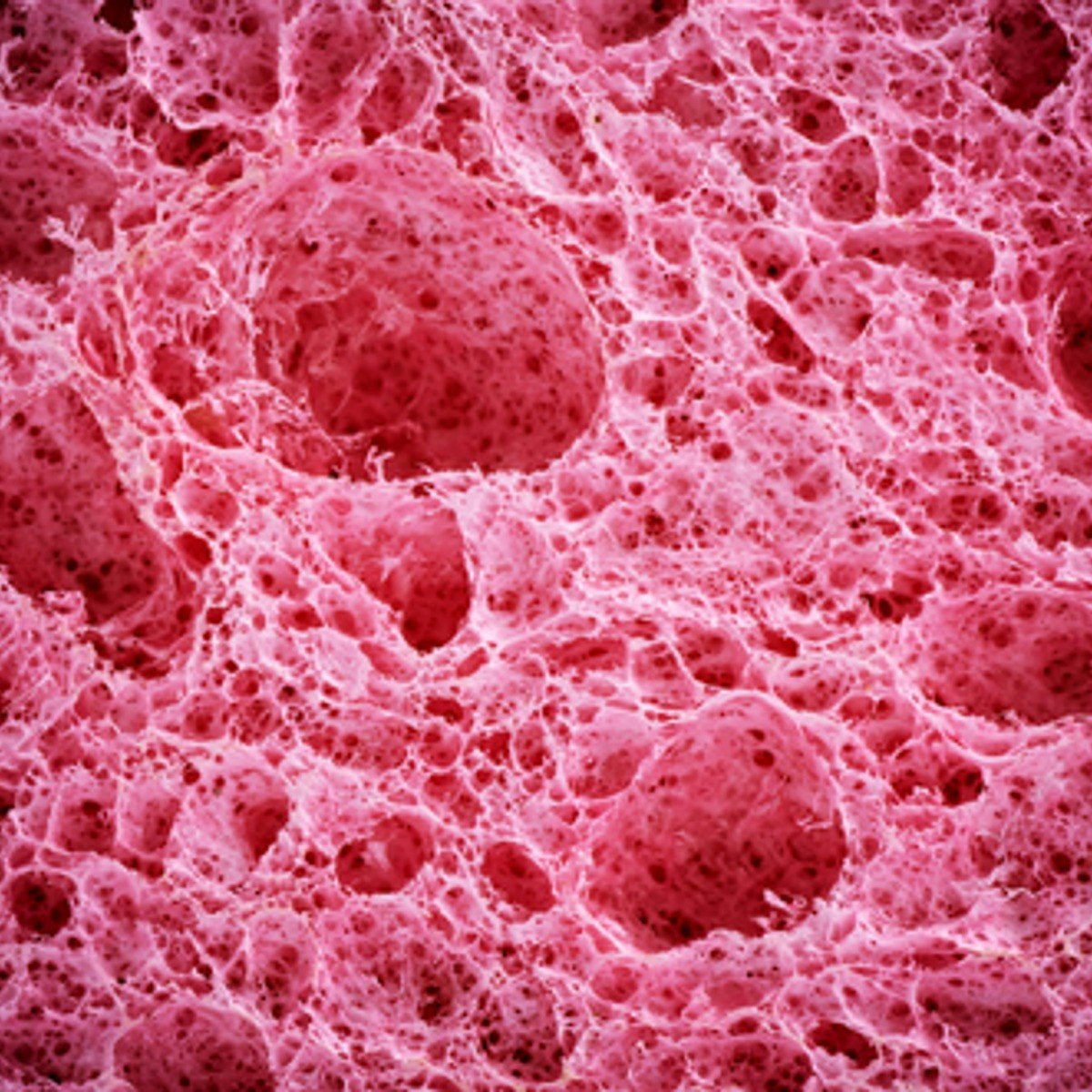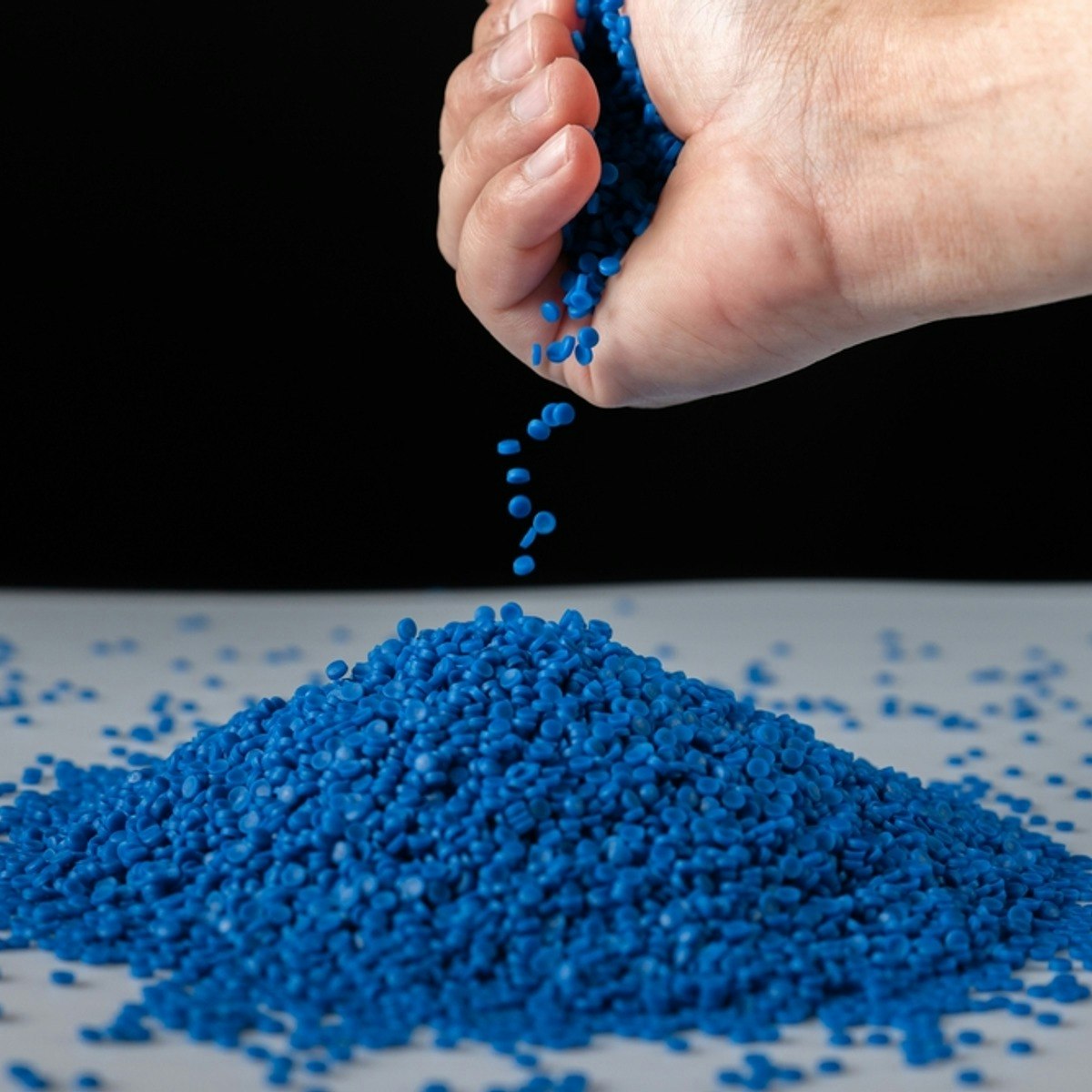Ceramic Engineer
Ceramic Engineer: Shaping the Future with Advanced Materials
Ceramic engineering is a specialized field focused on creating objects from inorganic, non-metallic materials processed using heat. It involves understanding how the composition and structure of ceramics influence their properties, and developing methods to manufacture ceramic components for various applications. It blends chemistry, physics, and engineering principles.
Working as a ceramic engineer offers the chance to innovate at the forefront of material science. You might develop heat shields for spacecraft, biocompatible implants for healthcare, or efficient components for electronics and energy storage. The field provides diverse opportunities to solve complex problems and contribute to technological advancements.
What is Ceramic Engineering?
Defining the Discipline
Ceramic engineering deals with the science and technology of creating products from inorganic, non-metallic materials. This involves processing these materials, often at high temperatures, to achieve desired properties like hardness, heat resistance, or electrical insulation. It's a branch of materials science and engineering.
The core of ceramic engineering lies in understanding the relationship between a material's atomic structure, its microstructure (how grains and phases are arranged), and its ultimate performance. Engineers in this field manipulate composition and processing variables, such as temperature and pressure, to tailor materials for specific needs.
This field encompasses a wide range of materials, including traditional ceramics like pottery and refractories, as well as advanced ceramics like oxides, carbides, nitrides, and composites. These advanced materials possess unique properties enabling cutting-edge applications.
For those new to materials science, understanding the fundamentals is key. These courses provide a solid introduction to the core concepts every engineer should know.
This foundational book offers a comprehensive overview of ceramic materials.
Where Ceramic Engineers Make an Impact
Ceramic engineers are vital in numerous industries. In aerospace, they design thermal protection systems for spacecraft and engine components that withstand extreme temperatures. The automotive sector uses ceramics for catalytic converters, sensors, and potentially even engine parts.
The electronics industry relies heavily on ceramic materials for insulators, capacitors, semiconductors, and piezoelectric devices found in everything from smartphones to complex circuits. Healthcare benefits immensely from biocompatible ceramics used in dental implants, bone replacements, and drug delivery systems.
Energy generation and storage also employ ceramics, including fuel cells, batteries, and insulators for high-voltage applications. Even construction and manufacturing depend on ceramic tools, refractories for furnaces, and wear-resistant components.
This broad applicability means ceramic engineers often work in diverse settings, from research labs to large-scale manufacturing plants. The field requires adapting core knowledge to very different industrial contexts and challenges.
Core Materials and Processes Explained
Ceramic engineers work with a vast palette of materials. These range from traditional silicate ceramics like porcelain and brick to advanced technical ceramics such as alumina (aluminum oxide), zirconia (zirconium dioxide), silicon carbide, and silicon nitride. Each material offers distinct properties – extreme hardness, high-temperature stability, chemical inertness, or specific electrical characteristics.
A key process is sintering, where ceramic powders are heated below their melting point, causing particles to bond and form a dense, solid object. Other crucial techniques include powder processing, sol-gel synthesis, thin-film deposition, and increasingly, additive manufacturing (3D printing) for complex shapes.
Understanding phase diagrams is critical for predicting how materials behave under different temperature and composition conditions. This knowledge allows engineers to control microstructure and properties during processing. Concepts like phase transformations are central to heat treatment and alloy development, even when applied to ceramic systems.
These concepts can be complex. Think of sintering like building a snowman: you press loose snow particles together, and they stick, forming a solid shape. Phase diagrams are like recipe maps for materials, showing what 'ingredients' (elements) form which 'dishes' (phases or structures) at different 'cooking temperatures'.
Understanding phase diagrams and transformations is fundamental. These resources delve into these essential topics.
A Brief History of Ceramics and Their Engineering
From Ancient Pottery to Industrial Use
The history of ceramics stretches back tens of thousands of years, beginning with clay figurines and pottery. Early humans discovered that firing clay made it hard and durable, leading to vessels for storage, cooking, and art. These traditional ceramics formed the foundation of the field.
The Industrial Revolution spurred significant advancements. The need for materials resistant to high temperatures in furnaces and engines led to the development of refractories. Innovations in processing allowed for more consistent and higher-quality ceramic products like insulators for the burgeoning electrical grid.
This era saw ceramics move beyond basic utility and art into engineered components critical for industrial processes. The scientific understanding of ceramic materials, however, was still developing.
Modern Era: Science-Driven Innovation
The 20th century marked the transition to modern ceramic engineering, driven by a deeper scientific understanding of materials at the atomic and microstructural levels. Scientists began to precisely control composition and processing to create ceramics with tailored properties.
Key breakthroughs included the development of advanced technical ceramics with exceptional strength, wear resistance, and electrical properties. Innovations like ceramic superconductors, piezoelectric materials for sensors and actuators, and tough ceramic composites opened entirely new application areas.
Bioceramics for medical implants emerged, leveraging the inertness and compatibility of certain ceramics with biological tissues. Today, ceramic engineering continues to push boundaries in fields like nanotechnology, energy, and electronics, building upon millennia of history but driven by cutting-edge science.
This text provides context on the broader field of materials science, including ceramics.
What Does a Ceramic Engineer Do?
Designing and Testing Materials
A primary responsibility of ceramic engineers is designing new ceramic materials or improving existing ones. This involves selecting raw materials, determining optimal compositions, and defining processing methods to achieve desired properties like strength, thermal conductivity, or electrical resistance.
Engineers develop and execute rigorous testing protocols. Techniques like X-ray diffraction (XRD) analyze crystal structure, scanning electron microscopy (SEM) reveals microstructure, and mechanical tests measure properties like hardness, toughness, and fracture strength. Data from these tests informs design iterations and ensures materials meet specifications.
This often involves computational modeling and simulation to predict material behavior before physical prototyping. Engineers use software to simulate processing conditions or performance under stress, accelerating the development cycle.
Collaboration and Project Management
Ceramic engineers rarely work in isolation. They frequently collaborate with experts from other disciplines, including chemical engineers, mechanical engineers, materials scientists, and manufacturing specialists. This teamwork is essential for integrating ceramic components into larger systems.
They often manage projects, overseeing timelines, budgets, and resources. This requires strong communication skills to coordinate activities across teams, present findings to stakeholders, and document processes and results effectively.
Whether developing a new aerospace component or optimizing a manufacturing line, the ceramic engineer acts as a crucial link between material science principles and real-world application, requiring both technical depth and interpersonal skills.
Ensuring Quality and Sustainability
Quality control is paramount in ceramic manufacturing. Engineers establish and monitor quality standards throughout the production process, from raw material inspection to final product testing. They implement statistical process control (SPC) methods to ensure consistency and identify potential issues early.
Troubleshooting production problems is a common task. If a batch of ceramics fails quality tests, the engineer investigates the root cause, which could range from variations in raw materials to deviations in firing temperature or atmospheric conditions.
Sustainability is an increasing focus. Ceramic engineers work to optimize energy efficiency in high-temperature processes like sintering, reduce waste through improved process control, and explore the use of more environmentally friendly raw materials or recycling methods where feasible.
Building Your Skillset for Ceramic Engineering
Foundational Technical Knowledge
A strong foundation in science and mathematics is essential. Core subjects include chemistry (especially inorganic and physical chemistry), physics (thermodynamics, mechanics, electromagnetism), and calculus. Understanding these principles is crucial for grasping material behavior.
Specific materials science topics are central. These include crystallography (the study of crystal structures), thermodynamics (energy and equilibrium in materials), kinetics (rates of processes like diffusion and phase transformations), and mechanical behavior of materials (how they respond to forces).
Familiarity with various materials characterization techniques is also vital. Engineers need to understand how methods like microscopy, spectroscopy, and diffraction are used to analyze ceramic structures and properties.
These courses cover fundamental concepts in material structure, properties, and behavior, which are directly applicable to ceramics.
Software and Simulation Tools
Modern ceramic engineering relies heavily on software tools. Proficiency in Computer-Aided Design (CAD) software is often required for designing ceramic components and molds. Examples include SolidWorks, AutoCAD, or specialized material design software.
Finite Element Analysis (FEA) software helps simulate how ceramic parts will behave under thermal and mechanical stress. This allows engineers to optimize designs and predict potential failure points before costly physical testing.
Data analysis software is used to process experimental results and monitor manufacturing processes. Familiarity with tools like Excel for basic analysis, or more advanced statistical packages like Minitab or programming languages like Python with data science libraries, can be advantageous.
Computational tools for thermodynamic modeling, like CALPHAD (Calculation of Phase Diagrams), are used in research and development to predict phase equilibria and guide material design. Understanding these tools enhances an engineer's ability to innovate.
This book provides a guide to CALPHAD techniques.
Problem-Solving in Demanding Environments
Ceramic engineers are fundamentally problem solvers. They face challenges related to material limitations (like brittleness), processing difficulties (achieving uniform density), and application-specific demands (withstanding extreme temperatures or corrosive environments).
Analytical thinking is crucial for diagnosing issues in production or design. Engineers must systematically gather data, form hypotheses, and test solutions. This requires a methodical approach and attention to detail.
Creativity also plays a role. Developing novel materials or finding innovative processing routes often requires thinking outside the box. The ability to adapt knowledge from related fields or devise unconventional experiments is valuable.
Working safely is paramount, especially given the high temperatures and potentially hazardous materials involved in ceramic processing. Understanding and adhering to safety protocols is a non-negotiable skill.
Educational Pathways to Become a Ceramic Engineer
Undergraduate Studies
A bachelor's degree in engineering is typically the minimum requirement. Many ceramic engineers hold degrees specifically in Ceramic Engineering or Materials Science and Engineering. Programs in Chemical Engineering or Mechanical Engineering with a materials focus can also provide relevant background.
Undergraduate curricula usually cover fundamental engineering principles, mathematics, physics, and chemistry in the early years. Later coursework delves into materials structure, properties, processing (including specific ceramic processing techniques), thermodynamics, kinetics, and characterization methods.
Look for programs accredited by recognized bodies like ABET (Accreditation Board for Engineering and Technology) in the US. Accreditation ensures the program meets certain quality standards. Hands-on laboratory work and design projects are integral parts of these programs.
Online courses can be excellent supplements to formal education or provide foundational knowledge for those exploring the field. Platforms like OpenCourser list numerous courses covering materials science fundamentals.
Graduate Studies and Research
While a bachelor's degree is sufficient for many entry-level positions, a master's or Ph.D. is often necessary for research and development (R&D) roles or university teaching. Graduate programs allow for deeper specialization in areas like electronic ceramics, bioceramics, composites, or advanced processing techniques.
Master's programs typically involve advanced coursework and may include a research thesis or project. Ph.D. programs are heavily research-focused, culminating in a dissertation that contributes original knowledge to the field. Pursuing graduate studies requires a strong academic record and a passion for research.
Research opportunities might explore cutting-edge topics like nanomaterials, additive manufacturing of ceramics, or materials for extreme environments. Choosing a graduate program often involves finding faculty whose research aligns with your interests.
This classic text is often used in graduate-level studies and provides deep insights into ceramic science.
Licensure and Professional Development
In the United States, engineers offering services directly to the public may need to be licensed as a Professional Engineer (PE). While not always required for ceramic engineers working in industry (especially in manufacturing or R&D), obtaining a PE license can enhance career prospects, particularly for consulting roles.
The process typically involves graduating from an ABET-accredited program, passing the Fundamentals of Engineering (FE) exam, gaining several years of relevant work experience under a licensed PE, and finally passing the Principles and Practice of Engineering (PE) exam.
Continuous learning is vital in this rapidly evolving field. Professional societies like The American Ceramic Society (ACerS) offer resources, conferences, and publications to help engineers stay current. Pursuing certifications or taking specialized short courses can also aid professional development.
OpenCourser's Learner's Guide offers tips on how to leverage online courses for continuous professional development and skill enhancement throughout your career.
Career Path and Advancement
Starting Your Career
Entry-level roles for ceramic engineers often include titles like Process Engineer, Materials Engineer, Quality Engineer, or Research Assistant. In these positions, graduates apply their academic knowledge to practical tasks under supervision.
Process engineers typically work in manufacturing settings, focusing on optimizing production lines, troubleshooting issues, and ensuring process control. Quality engineers focus on testing, implementing quality standards, and analyzing product consistency.
Materials engineers might work in R&D or application development, characterizing materials, assisting senior engineers with experiments, or adapting existing materials for new uses. Early roles provide valuable hands-on experience with industrial equipment and processes.
Mid-Career Opportunities
With experience, ceramic engineers can advance to roles with greater responsibility. This might involve leading R&D projects, managing specific product lines, or becoming technical experts in specialized areas like high-temperature coatings or electronic ceramics.
Opportunities in technical sales or field application engineering may arise, where engineers use their expertise to help customers select and implement ceramic solutions. Some engineers move into technical consulting, advising companies on material selection, processing, or failure analysis.
Roles like Senior Engineer, Project Manager, or R&D Scientist become accessible. Engineers at this stage often mentor junior staff and contribute significantly to strategic technical decisions within their organizations.
Leadership and Management Roles
Experienced ceramic engineers with strong leadership and business acumen can progress into management positions. This could involve leading entire engineering departments, managing large R&D divisions, or overseeing manufacturing plant operations.
Executive roles like Chief Technology Officer (CTO) or Vice President of Engineering are possible in companies heavily focused on materials technology. Some engineers leverage their technical expertise and industry knowledge to start their own companies or consulting firms.
Transitioning into management often requires developing skills beyond core engineering, such as financial management, strategic planning, and people leadership. An MBA or further management training can be beneficial for those pursuing this path.
Ceramic Engineering in Industry
Emerging Applications
Ceramic engineering is driving innovation in several high-growth areas. In renewable energy, ceramics are crucial for solid oxide fuel cells, advanced battery components (like solid-state electrolytes), and durable materials for solar and geothermal energy systems.
Additive manufacturing, or 3D printing of ceramics, is opening new possibilities for creating complex geometries previously impossible to manufacture. This impacts fields from medical implants (custom bone scaffolds) to aerospace (optimized lightweight components).
Nanoceramics, materials with grain sizes in the nanometer range, exhibit unique properties and are finding applications in catalysts, sensors, biomedical coatings, and advanced electronic devices. Developing and scaling up production of these materials is an active area of research.
This course provides an introduction to the burgeoning field of 3D printing technology.
This book discusses emergent methods relevant to high-tech ceramics.
Economic Impact and Market Dynamics
The market for advanced ceramics is substantial and growing, driven by demand from electronics, healthcare, energy, and defense sectors. According to reports like those from market analysis firms, the need for materials with enhanced performance characteristics fuels investment in ceramic R&D and manufacturing.
Global trends like electrification, miniaturization of electronics, and the push for sustainable energy solutions create ongoing opportunities for ceramic engineers. Geopolitical factors influencing supply chains for critical raw materials can also impact the industry.
The competitive landscape includes established multinational corporations, specialized ceramics manufacturers, and innovative startups. Understanding market needs and economic drivers helps engineers align their work with industry demands and contribute to commercially viable solutions.
Navigating Challenges in the Field
Technical Hurdles
One of the inherent challenges with many ceramics is their brittleness. Unlike metals, ceramics often fracture suddenly without significant plastic deformation. Improving toughness and reliability remains a major focus of research, involving techniques like incorporating reinforcing fibers or controlling microstructure.
Scaling up laboratory innovations to cost-effective industrial production can be difficult. Processes that work well on a small scale may face challenges related to uniformity, defect control, and energy consumption when implemented in large volumes.
Achieving consistent properties requires extremely precise control over raw materials purity, particle size distribution, and processing parameters like temperature and atmosphere. Minor variations can significantly impact final product performance.
Environmental and Funding Considerations
Ceramic processing, particularly sintering, is often energy-intensive due to the high temperatures required. Developing more energy-efficient processes and reducing the carbon footprint of manufacturing are important environmental challenges.
Regulations regarding emissions, waste disposal, and the use of certain raw materials impact the industry. Engineers must design processes that comply with environmental standards while remaining economically viable.
Funding for research, especially for exploratory projects involving new materials or processes, can be competitive. Securing grants or internal R&D budgets often requires demonstrating the potential impact and feasibility of proposed innovations.
The Future of Ceramic Engineering
Nanotechnology and Advanced Materials
The integration of nanotechnology is pushing the boundaries of ceramic engineering. Nanoceramics offer enhanced properties due to their extremely small grain sizes, leading to applications in ultra-strong materials, highly efficient catalysts, and novel electronic and optical devices.
Ceramic matrix composites (CMCs), where ceramic fibers reinforce a ceramic matrix, offer improved toughness and high-temperature performance. These are increasingly used in demanding applications like jet engine components and thermal protection systems.
Research continues into discovering entirely new ceramic compositions and structures with tailored functionalities, such as self-healing ceramics or materials with tunable electrical or magnetic properties.
AI and Automation in Discovery and Manufacturing
Artificial intelligence (AI) and machine learning are beginning to impact ceramic engineering. These tools can accelerate the discovery of new materials by analyzing vast datasets to predict compositions with desired properties, reducing the need for extensive trial-and-error experimentation.
Automation is transforming ceramic manufacturing. Robotics handle materials and parts, while sophisticated sensors and control systems monitor processes in real-time, improving consistency and efficiency. AI-driven process optimization adjusts parameters dynamically for better quality control.
Simulation tools are becoming more powerful, allowing for more accurate prediction of material behavior and process outcomes. This "digital twin" approach helps optimize designs and manufacturing processes virtually before physical implementation.
Sustainability and the Circular Economy
The principles of the circular economy are increasingly influencing ceramic engineering. This involves designing materials and processes for longevity, repairability, and recyclability. Research focuses on developing lower-energy processing routes and utilizing waste materials or industrial byproducts as raw materials.
Developing ceramics for green technologies, such as more efficient batteries, fuel cells, and catalysts for pollution control, is a major driver. Engineers are working on materials that enhance the sustainability of other industries.
Life cycle assessment (LCA) is used more frequently to evaluate the environmental impact of ceramic products from raw material extraction to end-of-life disposal, guiding efforts towards more sustainable practices throughout the value chain.
Frequently Asked Questions about Ceramic Engineering
Is ceramic engineering a field with strong job prospects?
Ceramic engineering is a specialized field within the broader category of materials science and engineering. Job prospects are generally tied to the health of industries that rely heavily on advanced materials, such as aerospace, electronics, energy, and healthcare. According to the U.S. Bureau of Labor Statistics, overall employment for materials engineers is projected to show steady growth.
Demand often exists for engineers with expertise in high-growth areas like advanced batteries, semiconductors, biomedical implants, and additive manufacturing. Specialization can enhance job prospects.
While it's a smaller field compared to mechanical or electrical engineering, its specialized nature means qualified engineers are often in demand for specific roles. Networking through professional organizations like ACerS can be beneficial.
Can I transition into ceramic engineering from related fields?
Yes, transitions are common, particularly from materials science, chemical engineering, physics, or chemistry. These fields provide a strong foundation in the underlying principles. Additional coursework or focused self-study in ceramic processing, phase diagrams, and characterization might be necessary.
Highlighting transferable skills is key. Experience with materials testing, process optimization, thermodynamics, or specific analytical techniques (like SEM or XRD) is valuable regardless of the initial material focus (metals, polymers, etc.).
For those considering a pivot, online courses offer a flexible way to gain specific knowledge. OpenCourser aggregates courses from various providers, allowing you to find targeted learning resources in areas like ceramic processing or phase equilibria.
Consider these courses for building foundational or specialized knowledge.
What are the main safety considerations in ceramic production?
Safety is a major concern due to several factors. High temperatures used in furnaces for firing and sintering pose burn risks and require careful handling procedures and personal protective equipment (PPE).
Inhalation of fine ceramic powders, especially silica-containing materials, can lead to respiratory diseases like silicosis. Proper ventilation, dust control measures, and respiratory protection are essential when handling powders.
Some raw materials or processing chemicals can be hazardous or corrosive. Engineers must understand material safety data sheets (MSDS) and follow protocols for safe handling, storage, and disposal.
Mechanical hazards exist with processing equipment like presses, mills, and automated machinery. Lockout/tagout procedures and machine guarding are standard safety practices.
How is automation impacting ceramic engineering jobs?
Automation is changing the nature of work, rather than eliminating jobs entirely for engineers. Routine tasks like data logging or sample handling may become automated, freeing up engineers to focus on higher-level problem-solving, process optimization, R&D, and design.
Engineers increasingly need skills related to managing automated systems, interpreting data generated by sensors, and working alongside robotics and AI-driven tools. Familiarity with data analysis and process control software becomes more important.
While automation might reduce the need for manual labor in production, it increases the demand for engineers who can design, implement, and manage these sophisticated manufacturing systems, ensuring efficiency and quality.
Are specific certifications important for career advancement?
While the Professional Engineer (PE) license can be valuable, particularly for consultants or those in roles with public safety implications, specific certifications are less common as mandatory requirements compared to some other engineering fields.
However, certifications related to specific skills or areas can enhance a resume. Examples include certifications in quality management systems (like Six Sigma), project management (like PMP), or specialized software or analytical techniques.
Continuous learning and demonstrated expertise, often gained through experience, publications, or participation in professional societies, are generally more critical for advancement than specific certifications in many industrial R&D or manufacturing roles.
Where are the global centers for ceramic engineering careers?
Ceramic engineering hubs often align with concentrations of industries that heavily utilize ceramics. In the United States, areas with strong aerospace, defense, electronics, or biomedical industries tend to have opportunities (e.g., Ohio, Pennsylvania, California, New York).
Internationally, countries with advanced manufacturing sectors are key players. Germany has a strong tradition in technical ceramics and automotive applications. Japan is a leader in electronic ceramics and advanced materials research.
Other significant regions include South Korea (electronics), China (large-scale manufacturing and growing R&D), and parts of Europe with specialized industries. Research institutions and universities globally also employ ceramic engineers.
Embarking on a career as a ceramic engineer means entering a field where science meets practical application, shaping the materials that define modern technology. It requires a strong technical foundation, continuous learning, and a passion for innovation. While challenging, it offers rewarding opportunities to contribute to diverse industries and push the boundaries of what's possible with materials.







